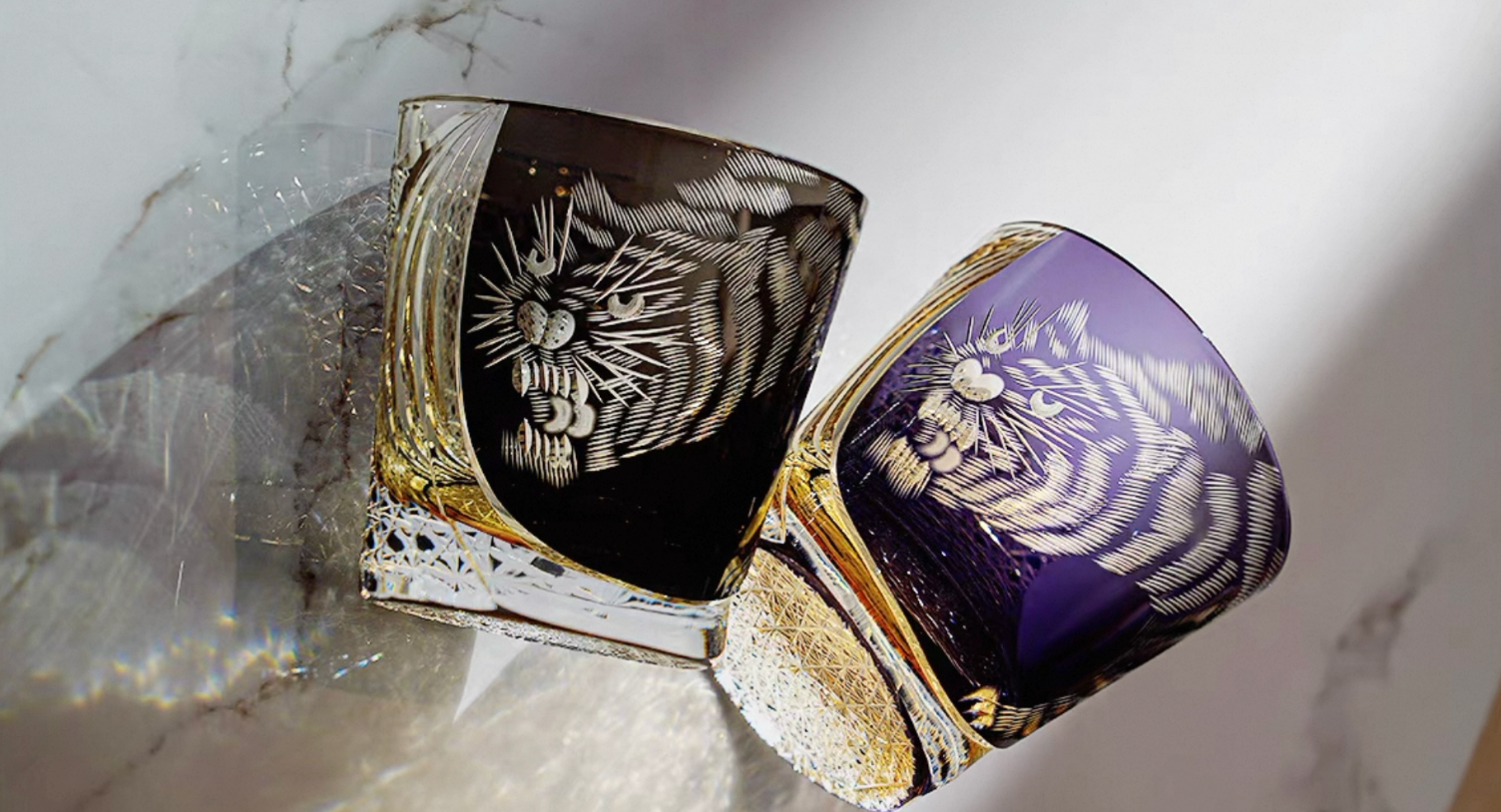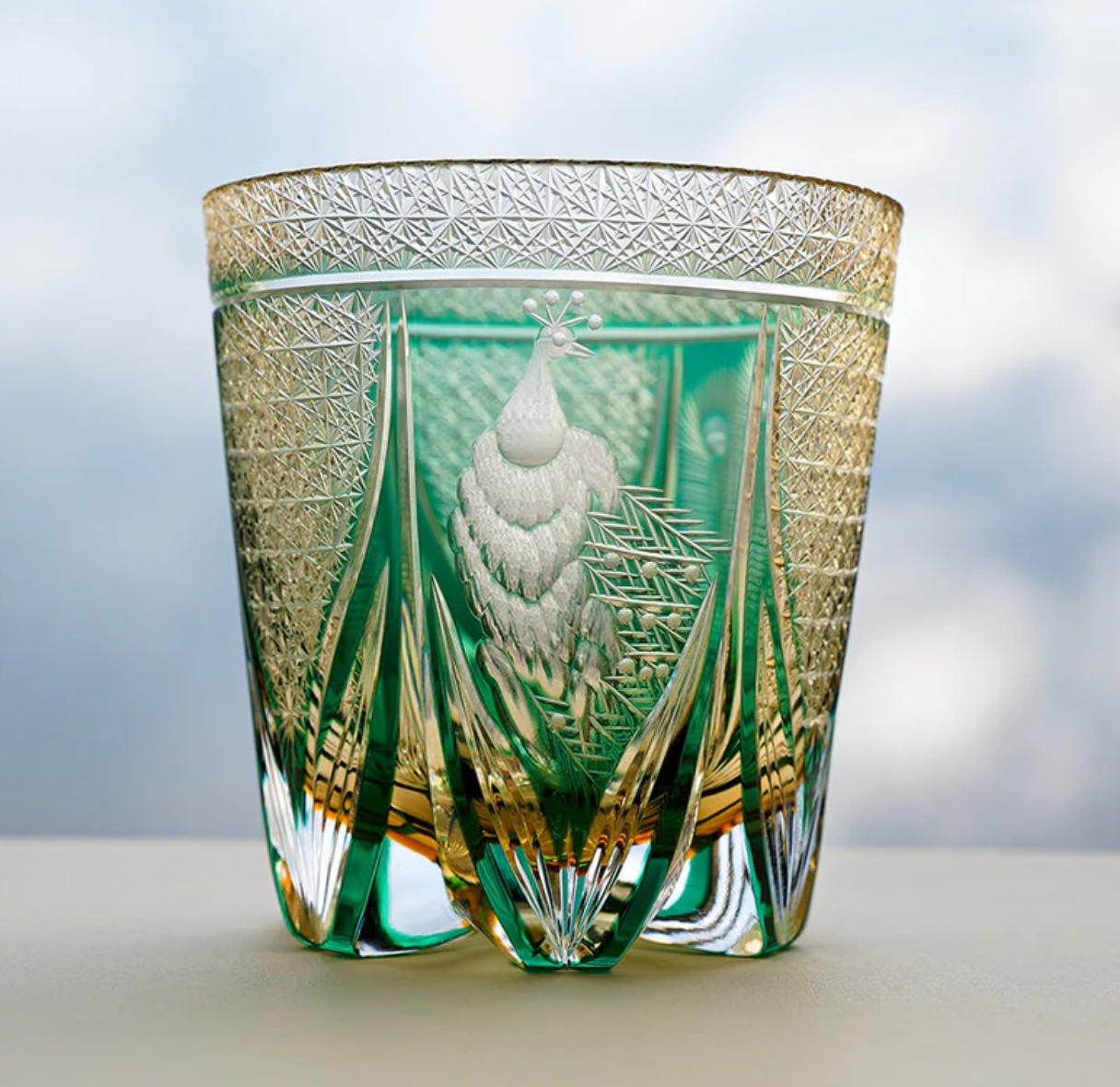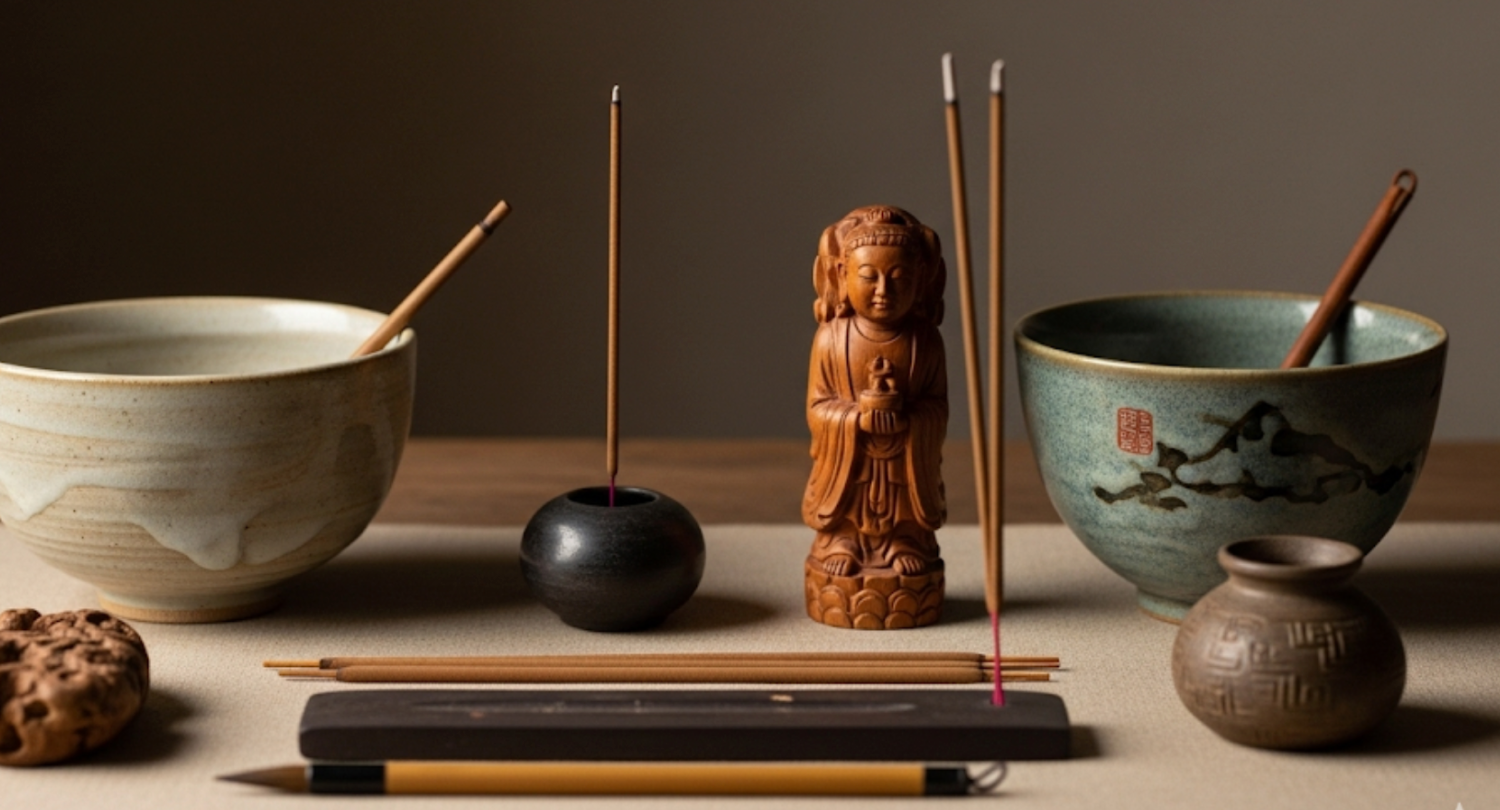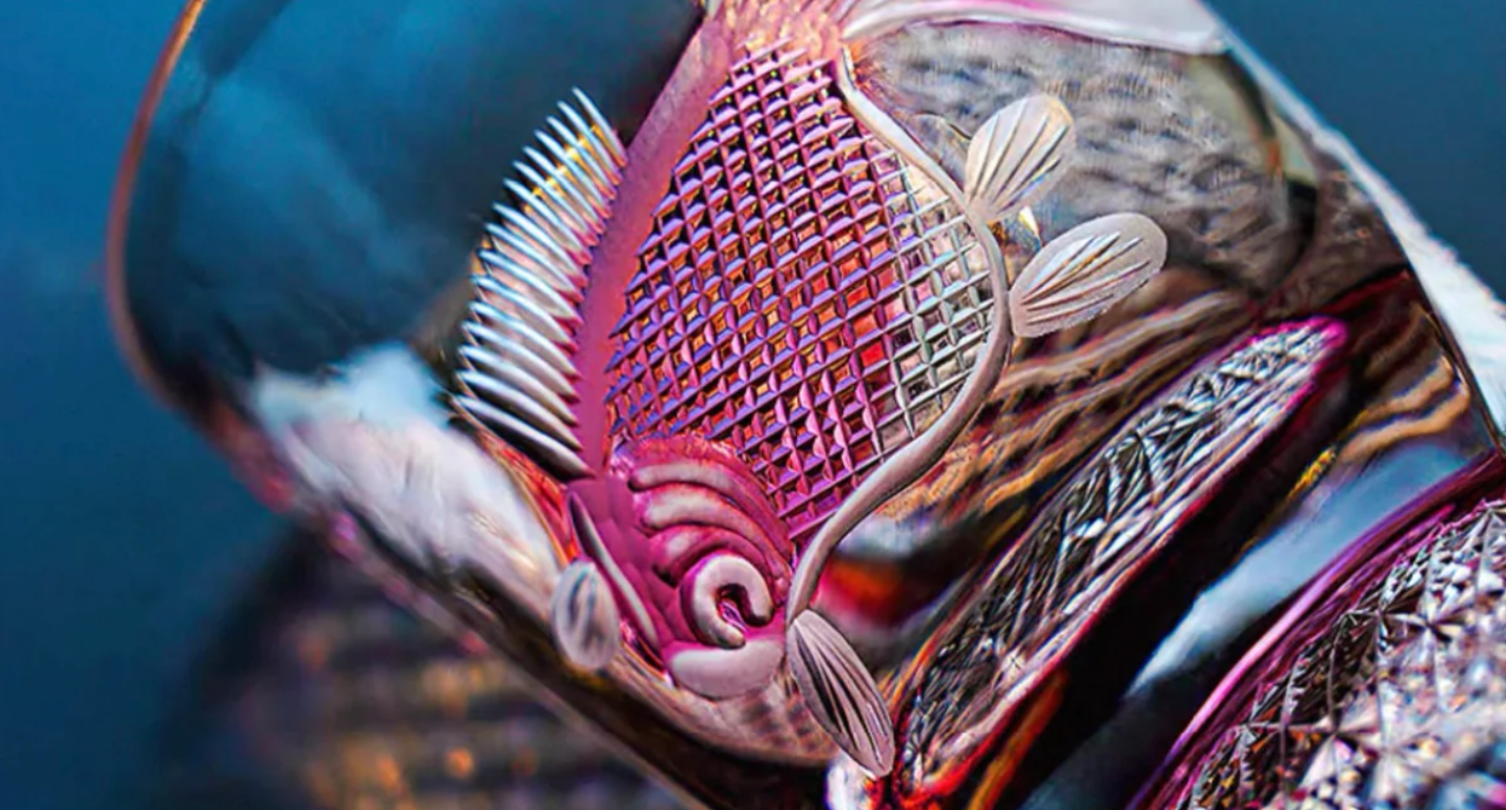
Edo Kiriko Whisky Glasses: The Pinnacle of Japanese Artisan Excellence
An Introduction to Edo Kiriko: Where Tradition Meets Sensory Experience
In the world of fine spirits, few experiences compare to savoring premium whisky from a masterfully crafted Edo Kiriko glass. These exquisite pieces represent more than mere drinkware—they are functional artworks that elevate the drinking experience through centuries-old Japanese craftsmanship. At Oriental Artisan, we recognize that discerning whisky enthusiasts seek not only quality beverages but also the perfect vessel to enhance their enjoyment. Edo Kiriko glasses, with their intricate cutting patterns and light-refracting properties, transform whisky appreciation into a multisensory ritual that honors both Japanese tradition and contemporary elegance.
The magic of these glasses lies in their ability to engage both the eye and the palate. As light dances through the precisely cut patterns, it creates a kaleidoscopic display that accentuates the rich amber hues of aged whisky. This visual spectacle complements the complex aromas and flavors, making each sip a moment to be savored. For those who appreciate the finer things in life, owning an Edo Kiriko glass represents the ultimate fusion of cultural heritage and artisanal excellence—a conversation piece that speaks to refined taste and worldly sophistication.
Historical Roots: From Edo Period Innovation to Modern Mastery
The story of Edo Kiriko begins in the Edo period (1603-1868), when Japanese glassmakers first experimented with cutting techniques on glass surfaces. The term "Kiriko" literally means "cut glass," reflecting the fundamental technique that defines this art form. The craft truly began to take shape in 1834 when Kyubei Kagaya, a glass merchant in the Odenmacho district of Edo (now Tokyo), started applying decorative cutting patterns to glassware using emery powder .
During the Meiji period (1868-1912), Japan opened to Western influences, leading to significant advancements in glass production techniques. British craftsmen introduced Western cutting methods that Japanese artisans seamlessly blended with traditional patterns, resulting in the distinctive style we recognize today as Edo Kiriko . The quality and beauty of these creations were so remarkable that even Commodore Matthew Perry, who led the opening of Japan to the West, expressed admiration for these exquisite pieces when he visited in the late Edo period .
Throughout the 20th century, Edo Kiriko evolved from utilitarian objects to cherished art forms, eventually receiving designation as a Traditional Japanese Craft in 2002. Today, master craftsmen continue to preserve these centuries-old techniques while incorporating contemporary designs that appeal to modern sensibilities.
The Meticulous Craftsmanship Process: Where Precision Meets Artistry
Creating authentic Edo Kiriko whisky glasses requires extraordinary skill, patience, and artistic vision. The process begins with selecting premium crystal glass with just the right density and clarity to maximize light refraction. Artisans then meticulously plan their designs, often without preliminary sketches—relying instead on years of experience and innate talent .
The cutting process involves several stages:
-
Sujibiki (Preliminary Cutting): The artisan makes initial cuts using a rotating wheel made of copper, tin, or stone, applying a mixture of abrasive powder and oil to etch the primary patterns.
-
Jabara (Detailed Cutting): Secondary patterns are carved with finer precision, creating the intricate layers that characterize high-quality Edo Kiriko.
-
Migaki (Polishing): The glass undergoes meticulous polishing using increasingly finer abrasives to achieve the characteristic brilliance and smooth feel.
What makes this process particularly remarkable is that no two pieces are identical. Each cut is guided by the artisan's hand, making every glass a unique expression of skill and creativity . The entire process from blank glass to finished product can take anywhere from several days to weeks, depending on the complexity of the design.
Table: The Stages of Edo Kiriko Production
| Stage | Process | Tools Used | Purpose |
|---|---|---|---|
| Design | Pattern conception | None (mental visualization) | Establish artistic direction |
| Sujibiki | Preliminary cutting | Copper wheel, abrasive powder | Create basic pattern structure |
| Jabara | Detailed cutting | Finer wheels, diamond points | Add intricate details and depth |
| Migaki | Polishing | Felt wheels, cerium oxide | Achieve brilliant transparency |
| Quality Control | Inspection | Magnifying lenses, light sources | Ensure perfection before sale |
Aesthetic and Functional Features: Beyond Mere Beauty
Edo Kiriko whisky glasses are celebrated for their dual nature—they are both stunning visual artworks and functional vessels designed to enhance the drinking experience. The most distinctive feature is the intricate pattern of cuts that creates a prism effect when light passes through the glass, producing rainbow-like reflections that dance around the room .
These patterns often draw inspiration from nature and Japanese cultural motifs. Common designs include:
-
Asanoha: Hemp leaf pattern symbolizing growth and health
-
Kikkō: Tortoiseshell pattern representing longevity and good fortune
-
Sakura: Cherry blossoms embodying the transient nature of beauty
-
Seigaiha: Ocean waves depicting peace and good fortune
From a functional perspective, the precise cutting does more than create visual appeal—it also provides an enhanced grip that prevents slipping, while the substantial weight and thickness of the crystal glass contribute to a satisfying heft that feels substantial in the hand. The cut patterns also increase the surface area of the glass, promoting aeration and helping to release the whisky's complex aromas .
When selecting a whisky glass, connoisseurs should consider both the aesthetic qualities and functional aspects. The best Edo Kiriko glasses feature patterns that are deep and precise, with clean edges that catch the light beautifully, and a form that complements the spirit's characteristics.
Cultural Significance and Philosophical Meaning
Edo Kiriko represents more than just technical mastery—it embodies the Japanese aesthetic principle of "takumi" (artisan skill) and the philosophical approach to craftsmanship that values both utility and beauty. This tradition reflects what is known as "monozukuri" (the art of making things), which encompasses not just technical skill but also spiritual dedication and pride in one's work .
The cultural significance of Edo Kiriko is deeply connected to the Japanese appreciation for transience and imperfection—concepts known as "wabi-sabi." The way light interacts differently with each glass depending on the angle, time of day, and liquid within aligns with this appreciation for momentary beauty. Similarly, the slight variations in each hand-cut piece celebrate the uniqueness of handmade objects rather than treating them as flaws.
In Japanese culture, the act of drinking is considered a mindful practice rather than mere consumption. The use of beautiful vessels like Edo Kiriko glasses enhances this ritualistic aspect, encouraging the drinker to slow down and appreciate the moment fully . This alignment of form, function, and philosophy makes these glasses particularly special for those who value both material beauty and cultural depth.
Edo Kiriko in the Modern World: Contemporary Appeal and Collectibility
While rooted in tradition, Edo Kiriko has evolved to maintain relevance in contemporary settings. Today's master craftsmen continue to innovate while respecting traditional techniques, creating pieces that bridge historical artistry and modern design sensibilities. The appeal of these glasses extends far beyond Japan's borders, with collectors and whisky enthusiasts worldwide seeking out authentic pieces .
The collectibility of Edo Kiriko glasses stems from several factors:
-
Artisanal Value: Each piece is primarily handmade by skilled craftsmen with years of training
-
Historical Significance: The continuation of a centuries-old tradition
-
Investment Potential: High-quality pieces often maintain or increase in value over time
-
Uniqueness: No two pieces are exactly identical due to the handmade nature
Modern manufacturers like Kagami Crystal have been instrumental in elevating Edo Kiriko to international recognition. Founded in 1934, Kagami became Japan's first crystal glass manufacturer and has since supplied glassware to the Imperial Household Agency and the Prime Minister's official residence . Their commitment to quality has helped establish Japanese crystal glass as competitive with European counterparts.
For contemporary consumers, Edo Kiriko glasses represent a connection to authentic craftsmanship in an increasingly mass-produced world. They appeal to those who value the story behind their possessions and appreciate objects that carry cultural meaning beyond their utilitarian function.
Choosing and Caring for Your Edo Kiriko Whisky Glass
Selecting the right Edo Kiriko glass involves considering both aesthetic preferences and practical concerns. Pattern complexity, glass shape, and color are primary considerations. While traditional Edo Kiriko features clear glass with transparent cuts, contemporary variations sometimes incorporate colored glass layers that create striking visual effects when cut .
Proper care is essential to maintain the beauty and integrity of these delicate pieces:
-
Hand washing is recommended using mild detergent and soft cloth
-
Avoid extreme temperature changes which can cause cracking
-
Store separately to prevent contact with other glassware that might cause chips or scratches
-
Dry immediately after washing to prevent water spots from forming on the cut surfaces
-
Avoid using abrasive cleaners or scrubbers that could damage the polished surfaces
With proper care, a high-quality Edo Kiriko glass can become a cherished heirloom passed down through generations, developing not just monetary value but sentimental significance as well .
Table: Edo Kiriko vs. Other Cut Glass Styles
| Feature | Edo Kiriko | Satsuma Kiriko | Western Crystal |
|---|---|---|---|
| Origin | Tokyo region | Kagoshima region | Europe/America |
| History | Since 1834 | Since mid-1800s | Varies by region |
| Pattern Style | Geometric, nature-inspired | Color layered cuts | Often figurative |
| Color Usage | Typically clear, sometimes colored overlay | Vibrant colored layers | Various approaches |
| Cutting Technique | Copper wheel, freehand | Similar to Edo Kiriko | Lead crystal, wheel cutting |
| Philosophy | Wabi-sabi, imperfection | Bold colors, dramatic effect | Precision, symmetry |
Conclusion: The Timeless Appeal of Edo Kiriko Whisky Glasses
Edo Kiriko whisky glasses represent the perfect marriage of form and function, tradition and innovation, art and utility. These exquisite pieces transform the simple act of drinking whisky into a elevated experience that engages all the senses while connecting the drinker to centuries of Japanese artisan tradition.
At Oriental Artisan, we believe that owning an Edo Kiriko glass is about more than acquiring a beautiful object—it's about embracing a philosophy of mindful appreciation for craftsmanship, beauty, and cultural heritage. Each glass tells a story of skilled hands shaping raw materials into objects of extraordinary beauty, carrying forward traditions that have captivated admirers from Commodore Perry to contemporary collectors.
We invite you to explore our curated collection of authentic Edo Kiriko whisky glasses, each piece selected for its exceptional quality, artistic merit, and ability to enhance your whisky appreciation journey. Discover why these magnificent glasses have been cherished for nearly two centuries and continue to represent the pinnacle of glass craftsmanship in Japan and beyond.
Explore our collection today and find the perfect Edo Kiriko glass that will transform your whisky enjoyment into a daily ritual of beauty and refinement.




Leave a comment
This site is protected by hCaptcha and the hCaptcha Privacy Policy and Terms of Service apply.